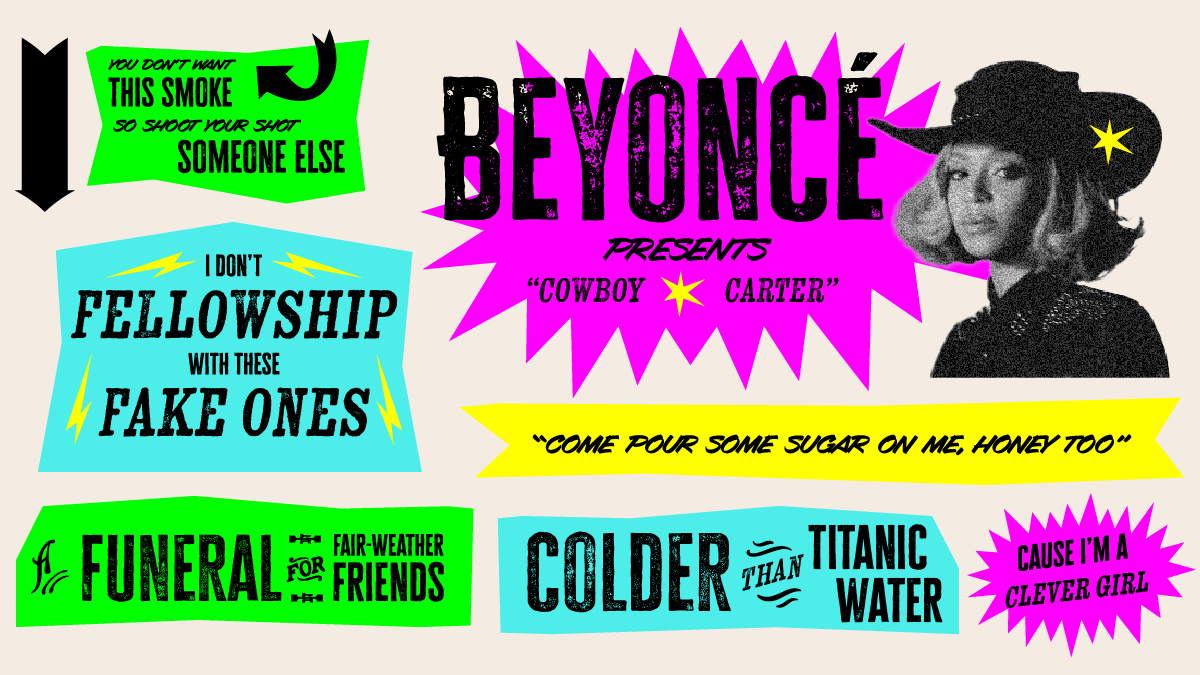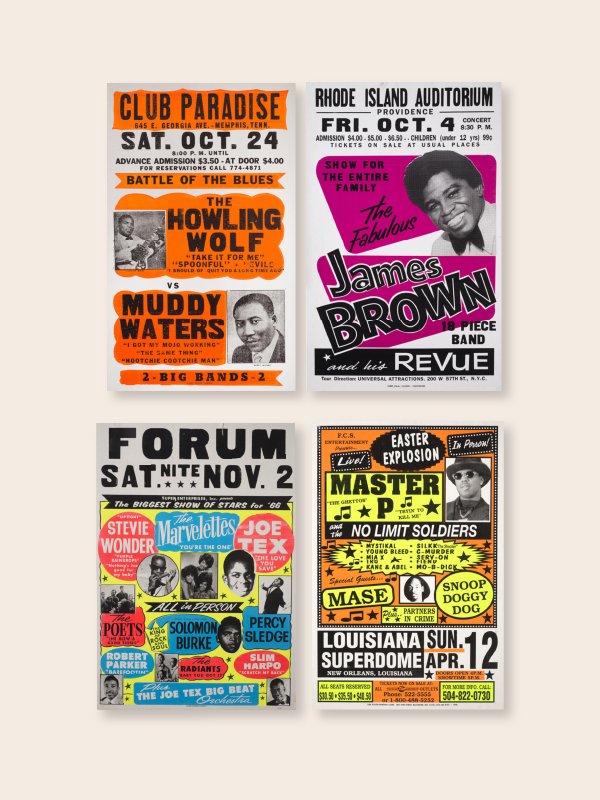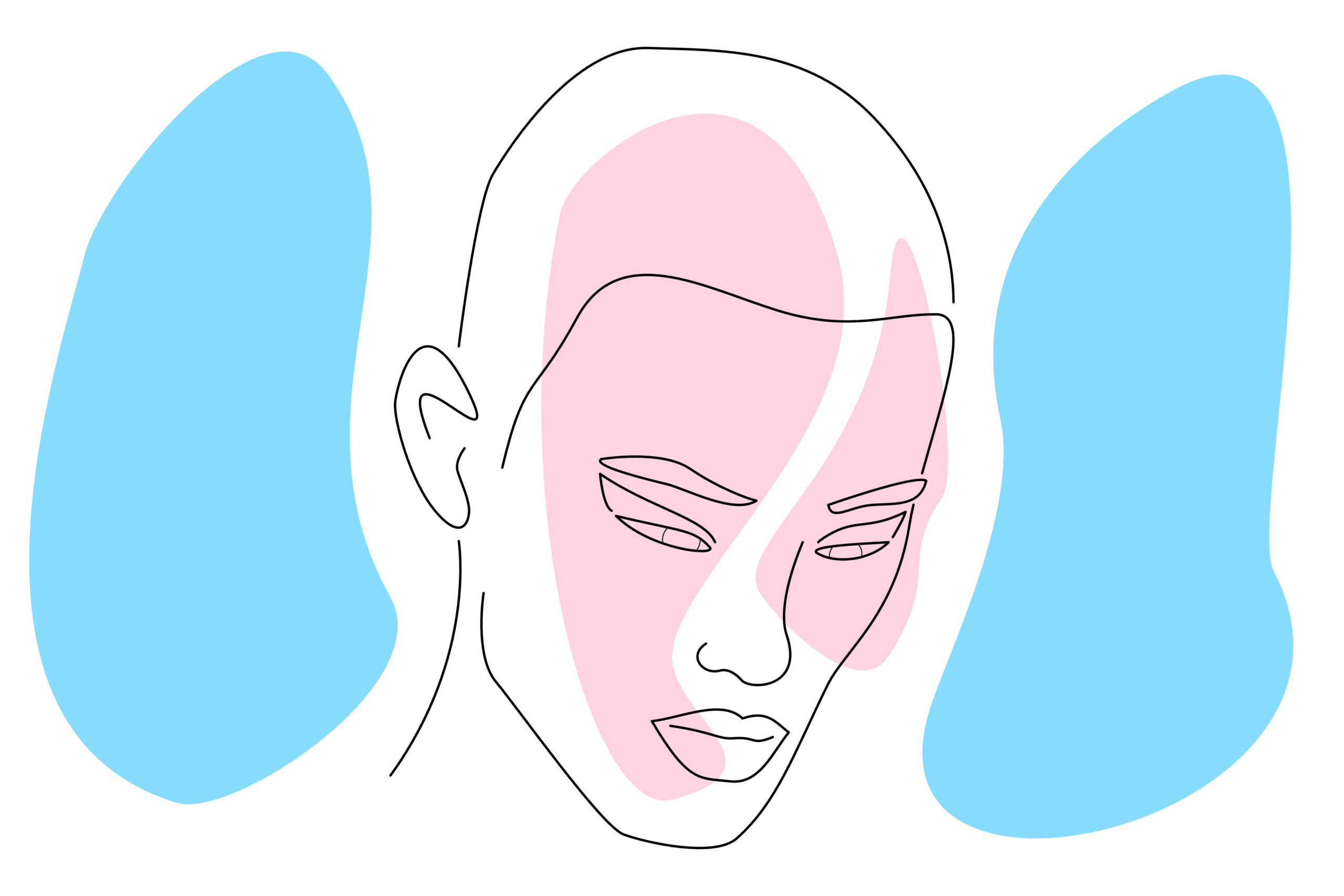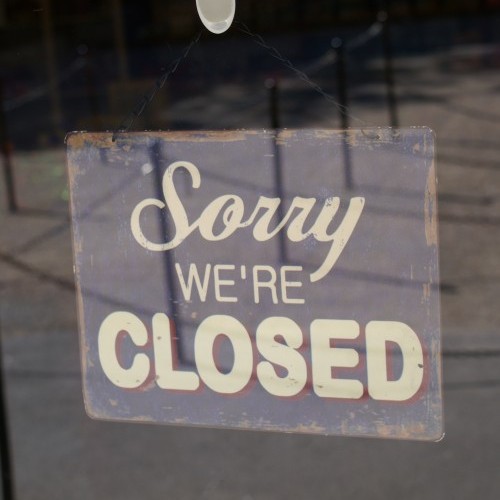Beyoncé Reminded Me That Design Is Always Political

My b’day is September 5. But of course 👑Queens👑come first.
As a fellow Virgo and expert grudge holder, I appreciate a meticulously researched, years-long revenge plot line. And like everyone else, I was ready at midnight SHARP on Cowboy Carter release day to listen to her latest album the way Beyoncé intended: “close your eyes, start from the beginning and never stop.”
As excited as I was about the album, when the tracklist was posted, I got even more excited: I immediately recognized the famous show poster style, originally developed by Baltimore-based print shop Globe, and the power it holds.
I’m a graphic designer and got the chance to tour Globe (now owned by MICA) in 2019 and learn the background of this now iconic poster style. Globe got its start in 1929 advertising public entertainment: carnivals, drag races, vaudeville, burlesque, and more. Globe had print shops in Philadelphia, Chicago, St. Louis, and Atlanta, but the Baltimore shop is likely the most well-known. Globe’s original mission was to ‘create ordinary posters for everyday people,’ giving us a glimpse into how they wanted to position themselves as part of the community.
In the early 1960s, when Black soul, blues, and go-go artists wanted to promote their acts, the shop—run by the Cicero family—became THE place to go. But it wasn’t only by choice that artists came to Globe: racist radio stations around the country refused to play the music of or even promote shows for Black singers from James Brown and Stevie Wonder to Muddy Waters and Mavis Staples.
Globe’s solution was not only effective but economical. Former Globe employee Harry Knorr is credited with using Day-Glo ink—made using fluorescent fish scales! Nature!—to immediately call attention to the type. The ink was cheaper and easier to print than traditional colors and the posters were more affordable than radio air time. Best of all, they were more noticeable at night or from a moving car.
Around Baltimore, these neon posters, printed on heavy stock that could withstand Mid-Atlantic weather, were nailed to telephone poles in Black neighborhoods and along highways that thousands of cars a day would see on their way to work. Globe added image cuts and large color blocks to promote multi-act performances, with the most important factor being instant legibility.
Harry Knorr’s definition of success for a poster? “You should be able to read it in three seconds.”
Among the bricks, trees, and roads, Globe’s vivid posters stood out and gave people a preview of the bill.

Globe continued partnering with musicians through the mid-90s to promote shows all across the country.
Beyoncé’s post—giving us a history lesson about how country music was pioneered by Black culture—used many of the classic shapes, bold inks, and San serif fonts that Globe used to give us a preview of what was to come with her new album. It was a show poster reimagined for 2024 and an intentional nod to the Chitlin Circuit, a safe collection of performance venues for Black artists to share their talents when they were prohibited from singing in white venues during the Jim Crow era. She was paying homage to the Black artists and also the designers who supported them way back when.
Graphic design is never neutral and it shouldn’t be. Designer Mike Monteiro says, “Design is always political” and “As designers, we don’t get to opt out.” These posters Globe created also went beyond music and advertised Black beaches like Carr’s Beach when racist white people supported, ignored or enforced segregation of public spaces.
Today, even in our digital age, quick printed and handmade posters are an accessible tool used for expressing righteous outrage at protests, community organizing, and disseminating info.
The owners of the Globe made posters for Black artists and in doing so created an iconic, enduring poster style that’s still relevant more than a half-century later. If you think you’re familiar with country music in America, I encourage you to not only listen to ‘Cowboy Carter’ but learn from the Black women explaining this oftentimes forgotten history of its origins.
Beyoncé told us she wants people to “hear [her] heart and soul, and all the love and passion that [she] poured into every detail and every sound.” So if you’ll excuse me, I have to listen to Daughter again.





